
The following is an exploration of what it means to own a mid-range device running on what T-Mobile qualifies as 4G. I’ve got to say that every time I mention 4G because every network is different, the speeds of “4G” entirely dependent on the network. What you’re going to be seeing is a device that makes no qualms about being a medium purple Android device with only an aim to provide you with a few apps, the ability to call, text, and browse the web. Welcome to the baseline!
Before we go any further, let’s have a look at our hands-on with this device as it stood when we pulled it out of the box a couple weeks ago. This device is part of a sort of suite of Android devices made by Samsung for T-Mobile to carry as mid-range smartphones, entry-level Android for the masses. Here’s the unboxing:
[VMS e49e655c1247efb389ce]
Hardware
This device is out in stores right this very minute and is running Android 2.3 Gingerbread on a 1GHz Hummingbird processor. It’s got a 3.5-inch display with 480 x 800 pixel resolution, and it’s got a VGA front-facing camera on the front and 3-megapixel camera on the back. It’s connected with T-Mobile’s HSPA+ network (4G) and comes with a 4GB microSD card with a slot upgradable to 32GB. Inside you’ll find a 1500mAh battery and 512MB RAM and 1GB of ROM.

The device is light, but not too light for its size, plastic all around including a full-back plastic battery cover, a plastic cover for the microUSB, and shiny chrome plastic all around the edge. The bottom of the device bends downward and away from your face where the Nexus S bends up – as if to say, I’m not a Nexus S, and I don’t intend to be. This device doesn’t feel cheap, but it certainly doesn’t feel like it’s worth $300 like most top-tier phones do. The build is nice, but it’s certainly reflective of the price you’ve payed for it.
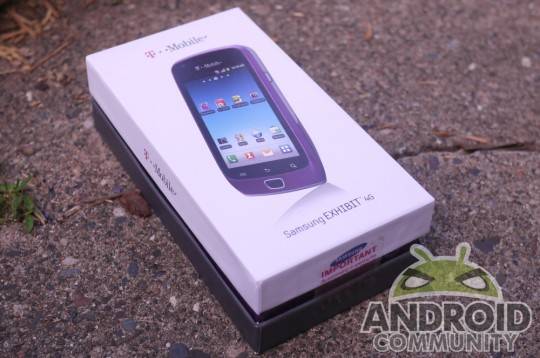
I’d still choose the LG Optimus V or Optimus U or whichever other letter one would choose depending on the carrier if we’re just basing this decision on the build quality, as I’m much more prone to love a soft plastic experience, but for those who want only a single physical button for home and three others for the rest of your Android actions, this is your device. Additionally, if you’re using a Samsung device that’s running some sort of basic phone operating system and want to upgrade to an Android device, you may enjoy the similar build quality here in the Exhibit.
Software and Performance
This device is running a relatively new Samsung TouchWiz, one you’ll recognize if you’ve ever played with a Samsung Android in the past but not the newest version certainly – made to welcome both those new to smartphones and those who’ve used Apple’s iOS in the past. That said, if you’re moving away from an iPhone, this probably isn’t your best bet – go for the Galaxy S II if you want a Samsung device after that Apple flagship.
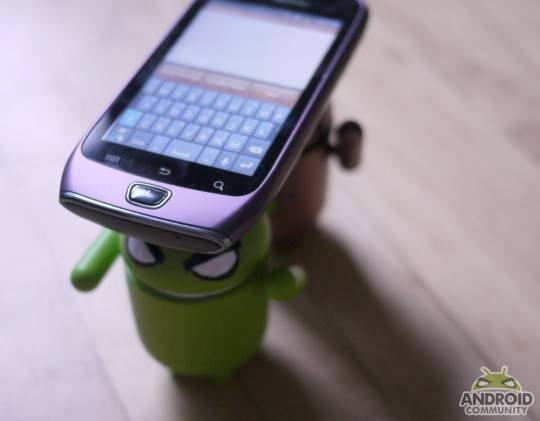
This device, despite it not having the most top-tier display in the world, does have a zippy processor at 1GHz single-core. You’ll be able to play basically any application you download from the app market (unless its specifically made for a certain processor or needs dual-core power, of course,) and you wont be dissapolinted by the speed in any way if you’re just moving to smartphones with this device from your years and years of feature phone oppression.

This device doesn’t take any crap from the rest of the top-tier phones of years past, too, if you believe the benchmarks. The Exhibit 4G regularly gets around 1000 in Quadrant Advanced, that beating out the Nexus One, Samsung Galaxy S original, and hitting right behind the Motorola Droid X. You’ll be whipping your finger back and forth along some sweet games all day long with that kind of action. This device includes several fun games right out of the box including Bejeweled 2, Doodle Jump, and Scrabble. This device also runs Swype for your keyboard and Slacker Radio for your ears.
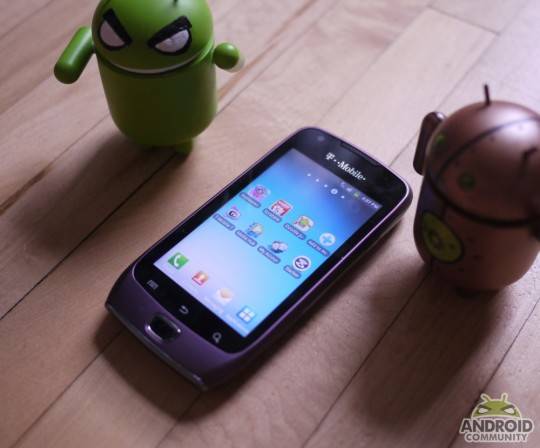
Camera and Battery
The battery is right up in the regular range at 1500 mAh giving you somewhere around 10 hours on a single charge with medium use throughout the day. This device doesn’t demand a whole lot of the battery so such a thing is to be expected. As for the camera, well, judge for yourself. It’s just as nice as the other two cameras we’ve seen come out of Samsung on these mid-range devices, and as we tested them all essentially in the same place, you’ve got an easy comparison to do:


Wrap-Up
This again is one of three Samsung devices now available on T-Mobile in the same range of functionality and, more than likely, price. There’s the Samsung Gravity Smart which is a slide-out QWERTY keyboard toting puck-shaped device, the Samsung Dart which is even more puck-shaped than the Gravity and holds the world record for simplest most basic Android device on earth, then this, the Samsung Exhibit 4G. These devices come up to contend against the LG Optimus mid-ranged line such as the LG Optimus U and the LG Optimus V, then soon against the HTC Wildfire S, a device announced for T-Mobile just this week.
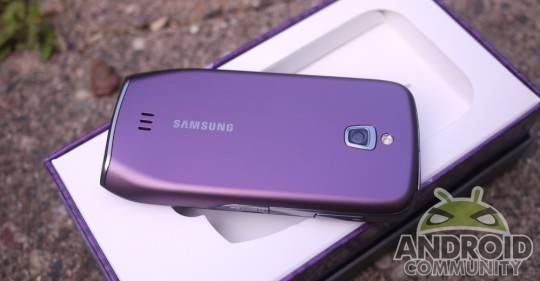
The mid-range is rising! It’s not necessarily the greatest place to be, certainly a stepping stone for most people into the world of NICE Android devices, but perhaps a necessary transition point indeed. The Samsung Exhibit 4G is the nicest device of the three Samsung handsets we’ve seen here over the past couple of weeks. It’s got a nice shape, the camera is OK, you can run quite a few apps on it, and it’s running on T-Mobile’s 4G network. Use this, then upgrade to a Samsung Galaxy S 4G. You’ll be glad you did.


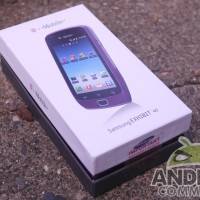
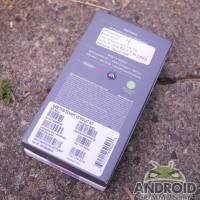
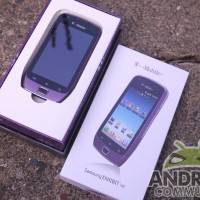
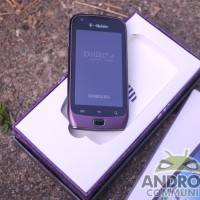
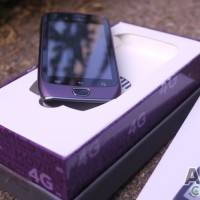

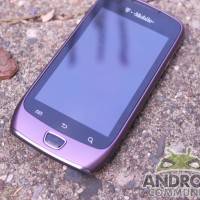
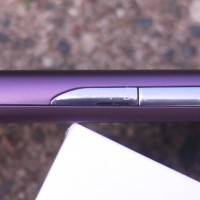

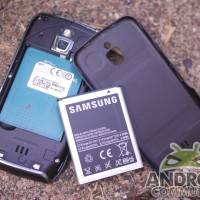
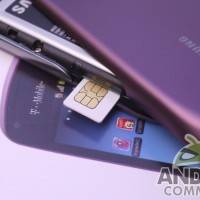



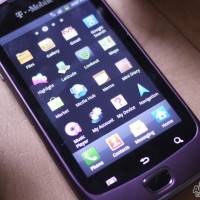
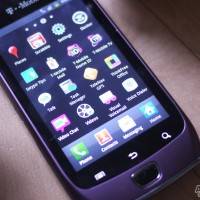
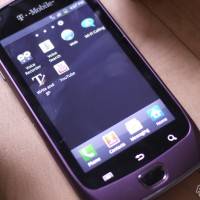











This is just a joke—you guys know I’ma AC head… But is that a chip of shit in the headline shot? LMMAO!
You are a loyal reader I see your comments almost daily so Thanks
looks like bark to me lol
Bad joke, bad joke. Ha! Great review though.
just bark man, just bark
full detailed review here
http://mobiscreen.net
full detailed review here
http://mobiscreen.net
full detailed review here
http://mobiscreen.net
Looks good, if its cheap (ie free on contract) might be a good phone for mainstream users. The 1ghz hummingbird blows away the CPU in LG Optimus T (600mhz ARM11 + GPU) and the LG Gelato aka Optimus T2?/Optimus Net? (800mhz ARM11 + GPU). Think of its as vibrant 4g with a smaller screen and worse camera.